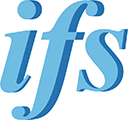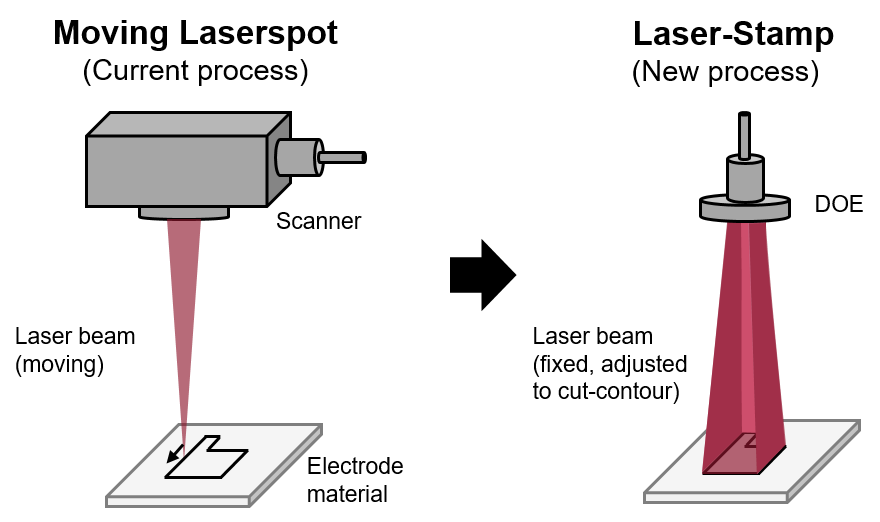
As a result of the increasing electrification of the mobility sector with the aim of reducing the emission of climate-damaging gases, the demand for lithium-ion batteries (LIB), which are an essential key component for the provision of electric vehicles, is also growing. In order to meet this constantly increasing demand, the LIB production processes must be designed and implemented in a more cost and time efficient manner. In the current cell production of LIB, there is particular potential for savings in the assembly of the electrodes, the time-consuming stacking of the electrode-separator composite and in the contacting process of the individual anode and cathode layers as well as in the holistic linking of the sub-processes mentioned.
The aim of the project consortium consisting of TU Braunschweig, TU Berlin and the Fraunhofer Institute for Laser Technology is therefore to develop a high-throughput production of LIB, whereby the sub-processes assembly, stacking and contacting are optimized and linked together in a time-efficient manner. Non-value-adding process steps, such as pick-and-place processes, are replaced by continuous automated process design. In this way, the production times per electrode are to be reduced from the order of >1 s to <0.2 s.
In this project, the Institute of Joining and Welding deals with the process step of cutting the electrodes. Here, the separation of the electrodes is examined by means of laser radiation. The use of the laser offers significant advantages over a mechanical punching process, such as short process time, high cut edge quality and low tool wear. An essential special feature of the laser cutting process to be considered in the project is the process design. In contrast to conventional laser cutting, where the cut is made by moving the laser spot, the laser-based punching process to be developed provides for simultaneous irradiation of the entire cut contour. For this purpose, the laser beam is adapted to the cutting contour by a diffractive optical element (DOE) so that the entire contour is cut simultaneously without moving the laser spot. In addition to the development of the laser punching process, the potentials and limits of this technology are evaluated in this project
Federal Ministry of Education and Research
Partners

